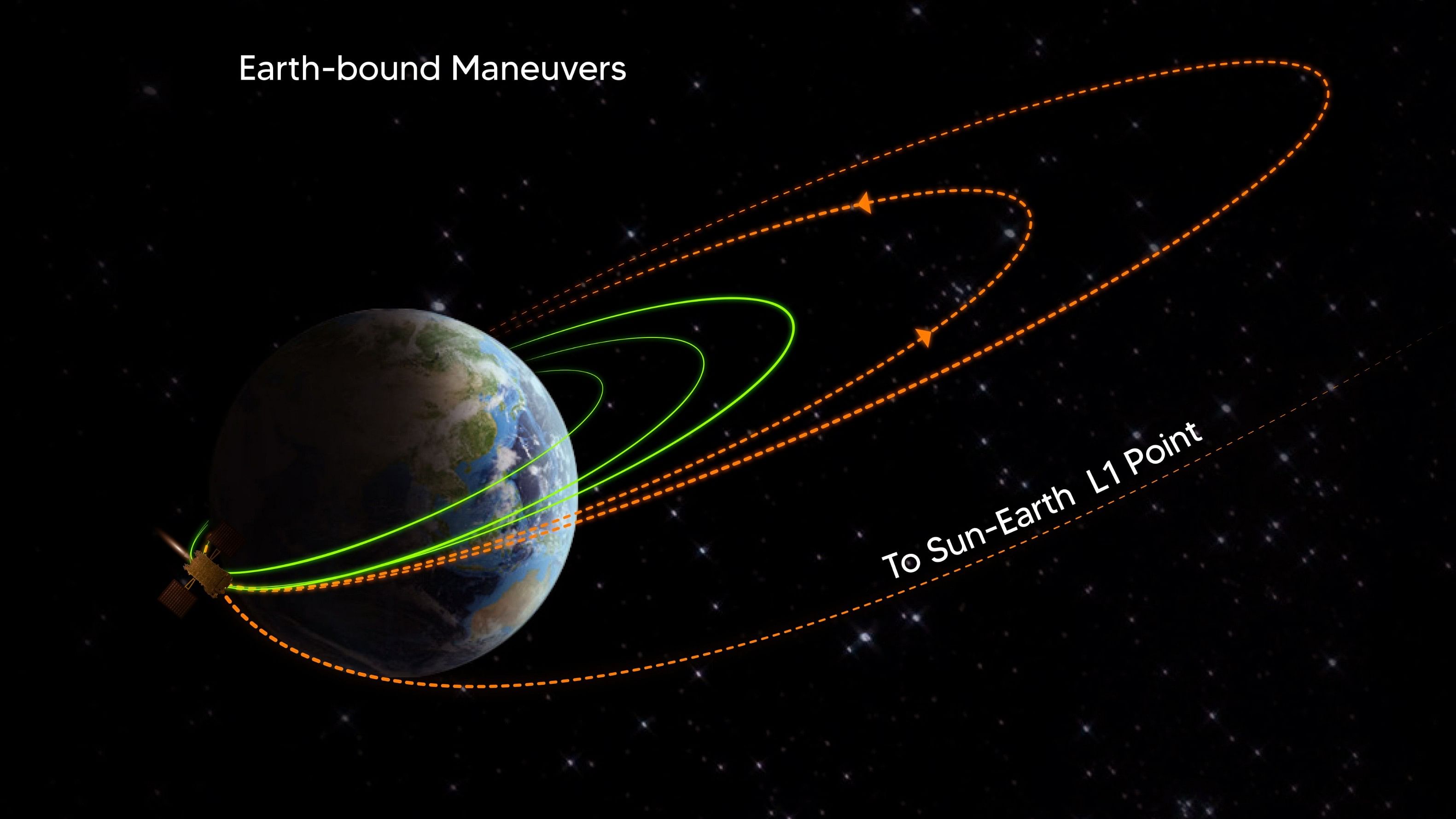
Photo by Isro of maneuvers of the Aditya-L1.
Credit: X/@isro
The Indian Space Research Organisation (ISRO) reached another space milestone on Saturday by placing the country’s first solar mission, Aditya L1, in a halo orbit around the Lagrangian point (l1). This is the location in space where the gravitational forces of the sun and the earth are in balance, allowing the spacecraft to remain stable. The craft will also get an uninterrupted view of the sun from there. It took 127 days for it to make its 1.5 million km journey. The mission had been on the radar for about 15 years and ISRO was working on it for three years. After the mission reached its destination, ISRO announced that it had achieved the exact placement and velocity, and would now monitor the craft’s progress and make corrections if necessary. Till now, everything about the mission has gone well and it is in a position to start sending data to the earth soon.
The mission, the country’s first solar observatory, will study coronal mass ejections of plasma and energy released from the sun. It is designed to study a number of solar phenomena. The spacecraft carries payloads to study the photosphere, chromosphere and the outermost layer of the sun using electromagnetic detectors. The data will be extremely useful because most solar phenomena impact the earth and activities such as the operation of satellites. Very little is known about the sun and that makes the information especially significant. Apart from throwing light on the sun, the data will help in areas like space weather forecasting. ISRO Chairman S Somanath has said the data from the mission will be made available to researchers across the world.
According to ISRO, the insertion of the craft into the orbit demanded precise navigation and control, and the success of the mission has validated the organisation’s capabilities in complex orbital manoeuvres and interplanetary missions. India is the first Asian country to place a spacecraft in an orbit around the sun. The US and the European space agency have sent their probes to the solar system. The Japanese and Chinese solar observatory missions are in the earth’s orbit. Last year, ISRO created history by landing a craft near the south pole of the moon. Last week, it launched a satellite to study cosmic objects like blackholes.
ISRO has a number of ambitious projects lined up. Manned and unmanned space fights and missions to Mars and Venus are on the cards in the near future. ISRO’s scientists and engineers deserve congratulations on the achievements, which make India a major space power.